Hollywood film directors invigorate the Met’s latest fashion exhibition
While all eyes were on the star-studded Met Gala, another Hollywood-forward spectacle was opening at New York City’s Metropolitan Museum of Art.
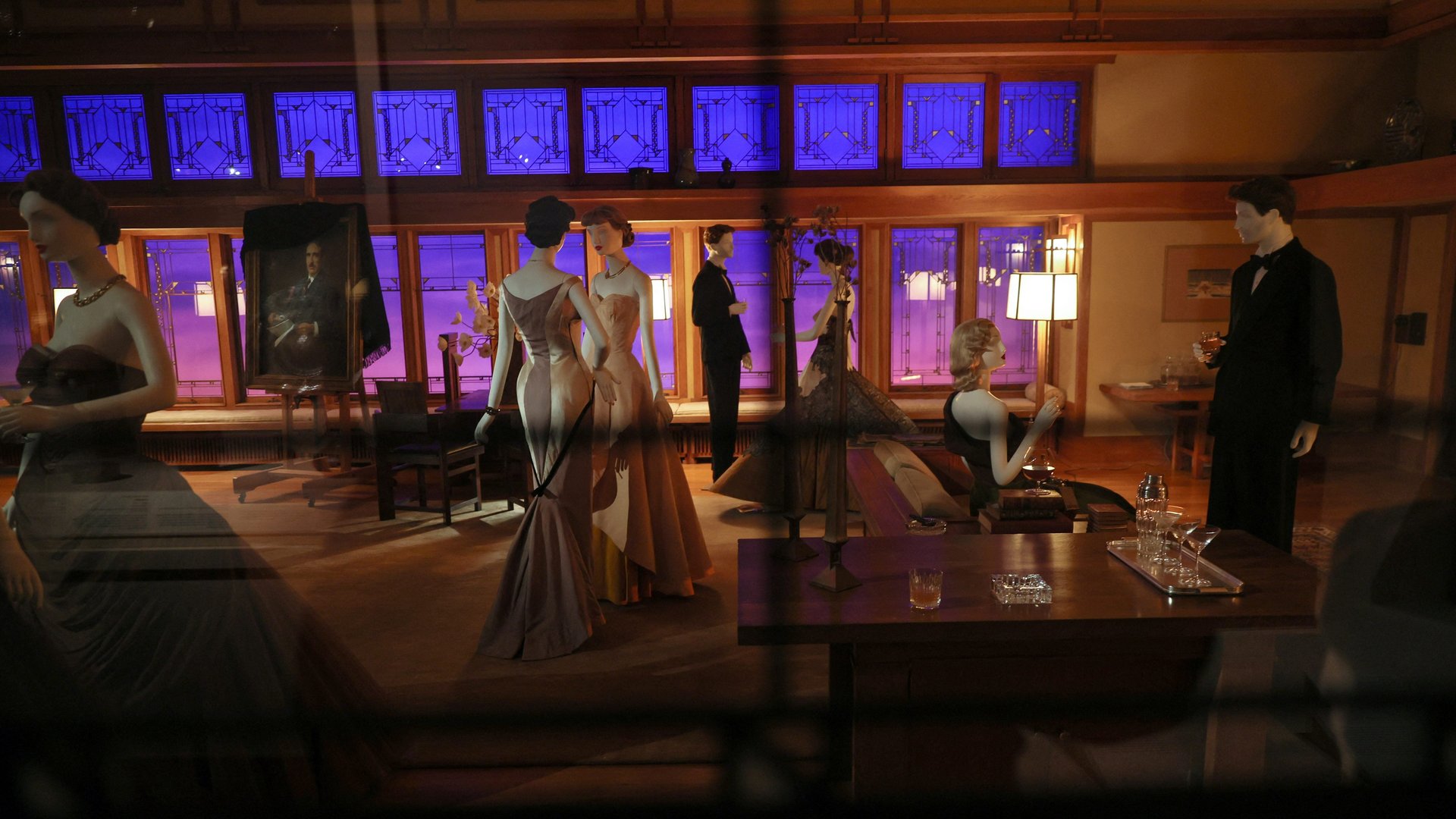

While all eyes were on the star-studded Met Gala, another Hollywood-forward spectacle was opening at New York City’s Metropolitan Museum of Art.
In the American wing, the second installment of the museum’s annual fashion survey, In America: An Anthology of Fashion, featured period rooms conceived by nine renowned film directors, Martin Scorsese, Chloé Zhao, Sofia Coppola, Radha Blank, Janicza Bravo, Julie Dash, Autumn de Wilde, Regina King, and Tom Ford. In the hands of these master storytellers, old frocks and suits come alive far more than against the stark white box backdrops of most fashion exhibitions.
At the May 2 preview, Andrew Bolton, the Costume Institute’s curator, explained how they relished pairing the director, the designer, and the room. The hope, he says, is that the fictional tableaus “activate histories in compelling and unexpected ways” and highlight lesser known figures who shaped American fashion.
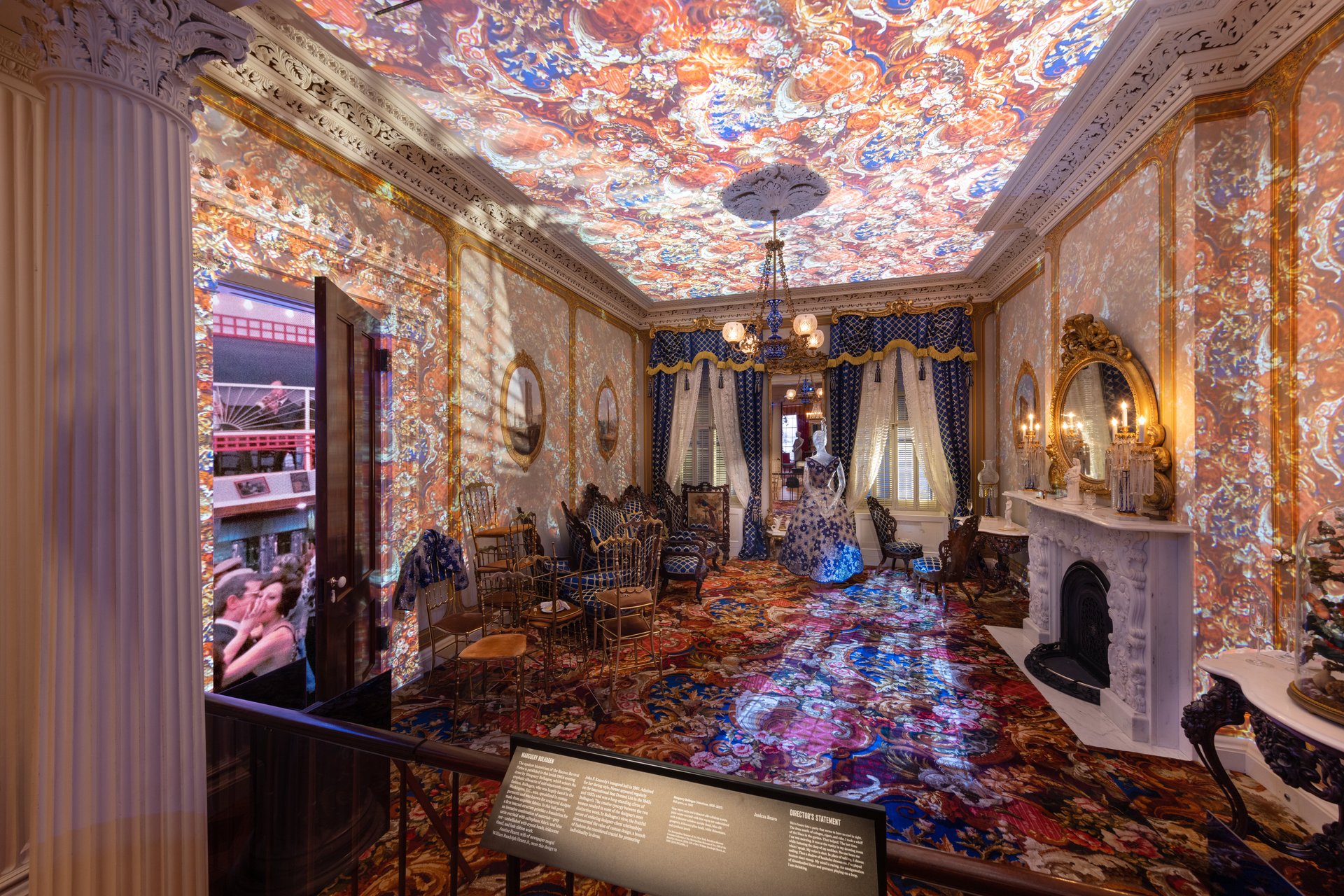
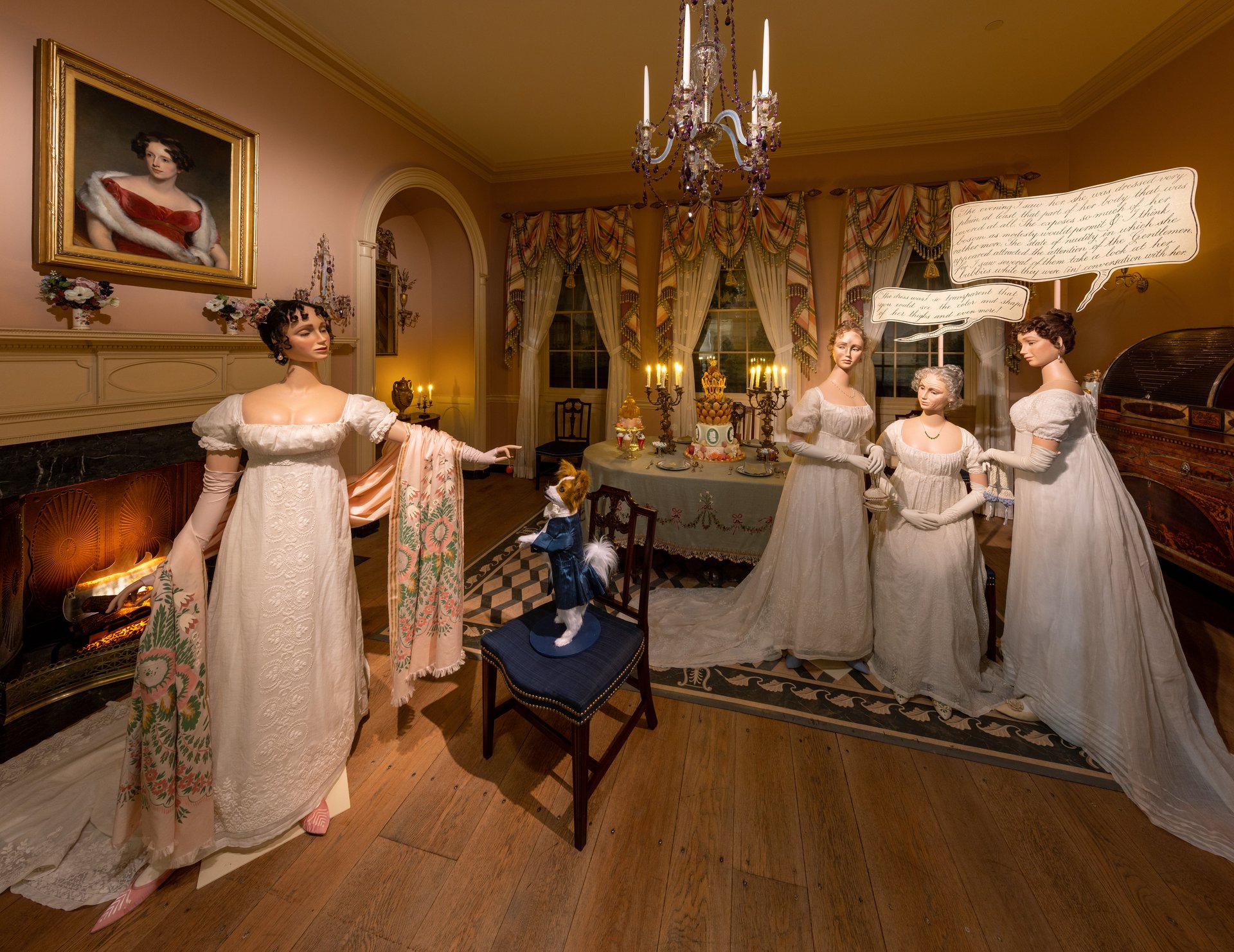
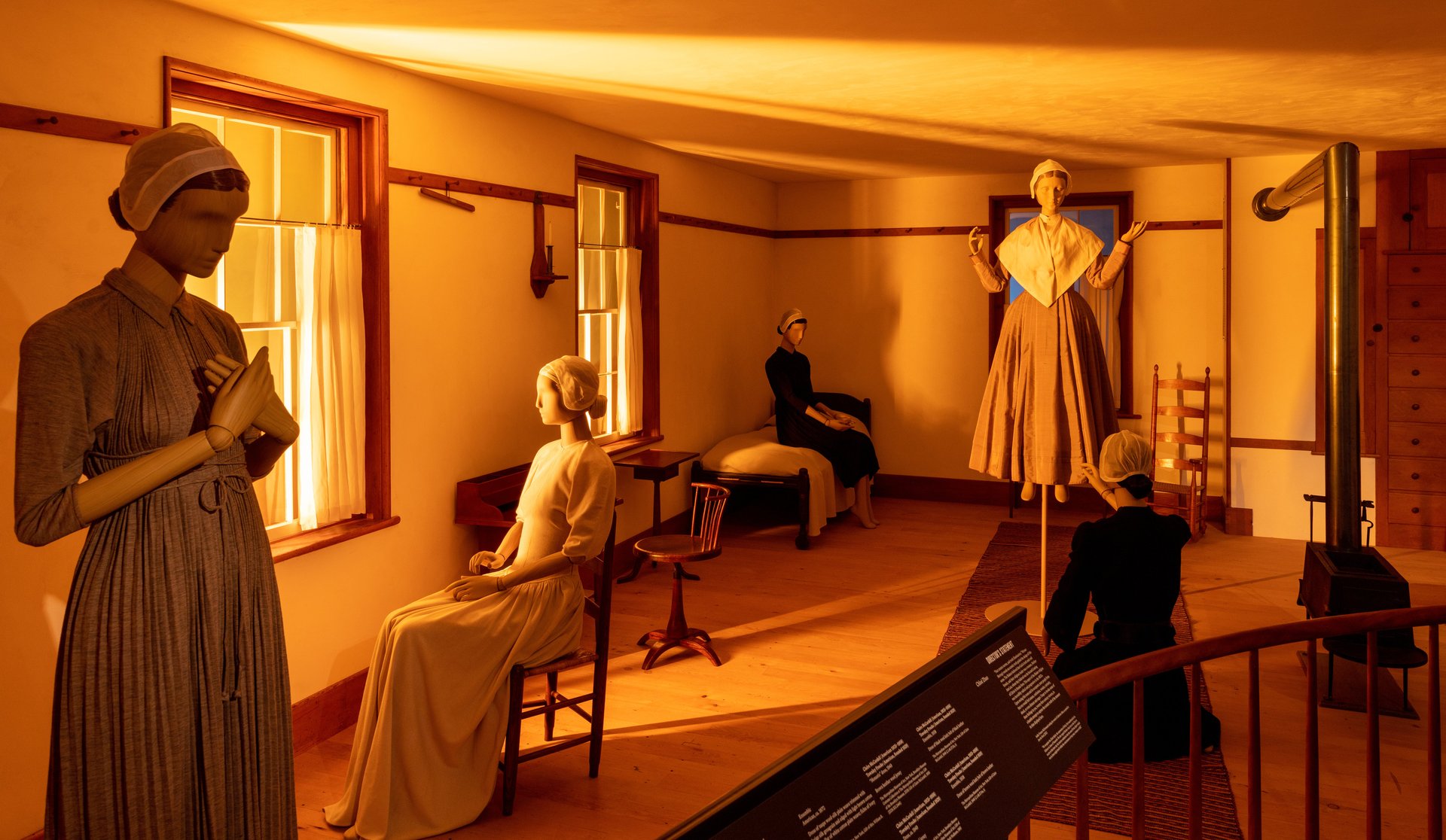
Scorsese’s noir vignette, a wake staged in a living room designed by architect Frank Lloyd Wright, he underscores the twin sensibilities between the famously controlling architect and Charles James, the English-American couturier known for meticulously-constructed ball gowns and an uncompromising demeanor. James, who was the subject of a 2014 exhibition at the Met, paid little notice to his client’s preferences, the Met’s curators explain. “He had his own ideas for designs and fitted them to the customer, whether they liked it or not.”

In a specially-built circular gallery for a panoramic painting of Versailles’s landscape, Tom Ford (A Single Man) created a freeze frame of a fight scene, referencing a historic showdown between French and American fashion designers in 1973 dubbed the “Battle of Versailles.” Characteristic of Ford’s unerring use of bombast and restraint, the skirmish—flying ninja hi-jinks, fencing, karate chops—offers an indelible and poetic setting for American designers like Stephen Burrows, Yves Saint Laurent, and Halston who defeated their French counterparts.
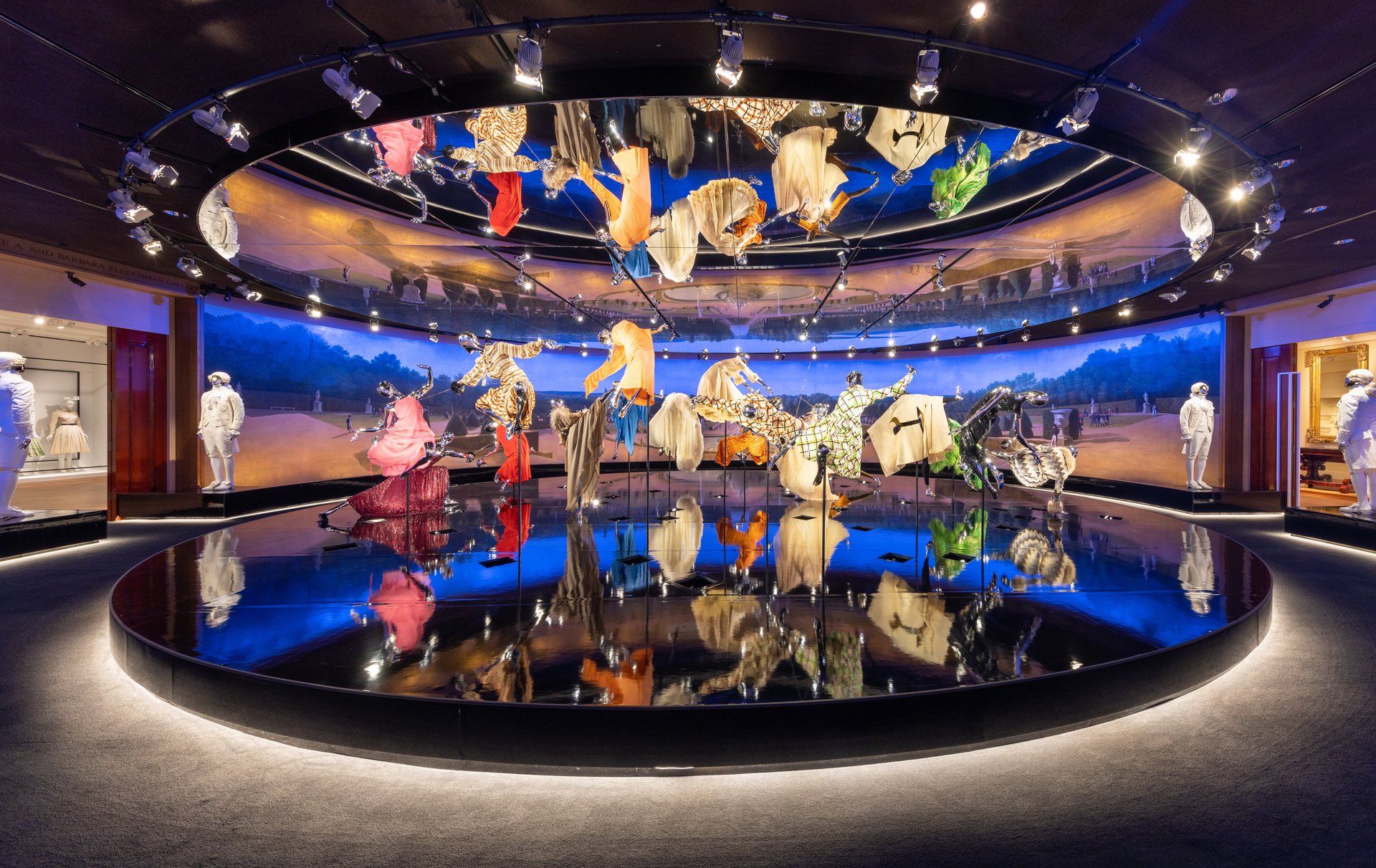
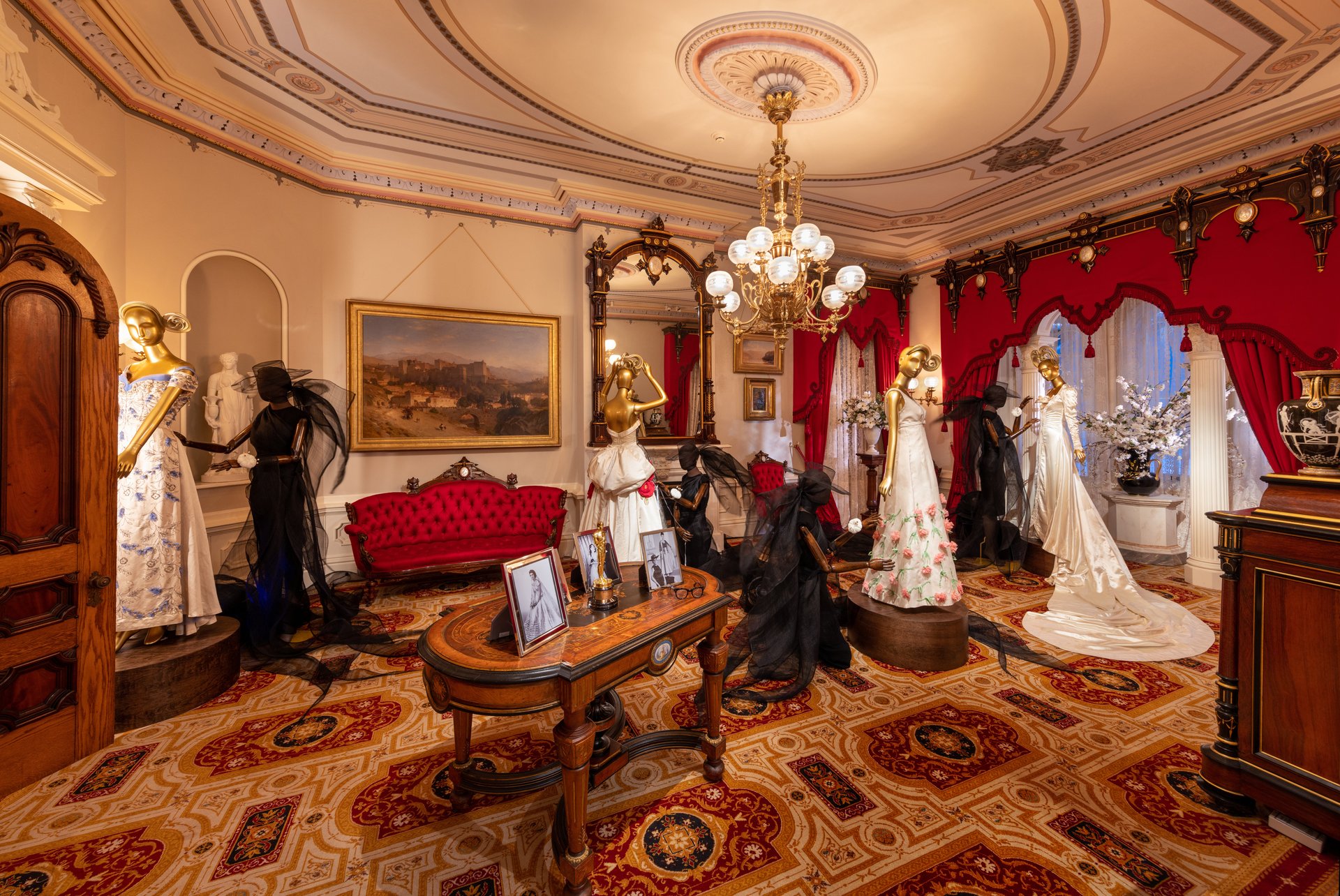
Perhaps the most didactic and poignant vignette was conceived by Dash (Daughters of Dust), who made history as the first African American woman to direct a feature film shown in wide release. In the Met’s Renaissance revival parlor room, she created a long-overdue homage to Ann Lowe, a Black designer favored by 1950’s socialites including Jacqueline Kennedy who asked her to design her wedding dress. The granddaughter of an enslaved seamstress, Lowe is yet another trailblazing Black female overlooked by contemporary historians, and in Dash’s evocative staging, she’s represented by veiled figures swathed in black chiffon adjusting her party dresses.
First lady Jill Biden, who opened the exhibition, underscored the exhibit’s educational value. “The history of American design is rich and deep,” she said. “It is the story of innovation and ingenuity; of rebellion and renewal. It has often been written by those in the shadows.”
Celebrity money
The exhibition also marks the museum’s ever-growing alliance with Hollywood, which helps the museum raise operating funds. Last week’s star-studded Met gala alone brought in a record $17.4 million from ticket sales ($30,000 apiece, $340,000 for tables) and sponsorship deals.